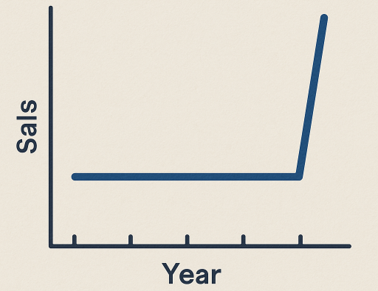Challenging the Status Quo within a Distribution Sales Channel: A Leadership Lesson
While serving as a District Manager (many moons ago) overseeing a distribution channel in Northeast Ontario, I came across a puzzling trend. Despite consistent support and a stable market, one of our distribution partners had shown no year over year (YoY) sales growth. Month over month (MoM) and quarter over quarter (QoQ) metrics were equally stagnant. The partner’s rationale for the lack of progress felt uninspired and disengaged.
I approached my senior leadership team with a proposal: allow me to temporarily introduce a second distribution partner into the territory to prove there was untapped opportunity. Leadership, concerned about disrupting existing relationships, declined the proposal. Instead, I was asked to work collaboratively with the incumbent partner to improve performance.
Respecting the directive, I leaned in. I introduced new programs, offered marketing development funds (MDF), and proposed several new strategic initiatives aimed at driving sales. Unfortunately, the partner remained closed off to innovation and unwilling to pivot.
As anyone who has worked in a distribution model knows, these partners don’t report to you. They aren’t obligated to adopt your strategies or support your sales targets. Yet your success hinges on their performance. This disconnect between accountability and control is one of the most complex sales challenges in managing an indirect sales channel.
After a full quarter of engagement, and minimal traction, I again requested permission to temporarily bring in another partner. Leadership still preferred a conservative approach, asking me to continue working with the same partner. I did, continuing to offer support, resources, and fresh ideas. Once again, results remained flat.
Finally, after presenting another quarter of stagnant performance, I made a renewed case for proving the market potential. This time, leadership gave me the green light.
Without going into my personal proprietary details (reach out if you’re curious), I acted quickly: I rented two minivans and brought in five sales representatives from another partner/region, five hours away. In just 36 hours, we generated sales equivalent to what the existing partner had achieved in three months.
Observations:
- Value Over Authority: In a distribution channel, success comes from adding value, not issuing directives. Influence trumps control.
- Relationships Matter: Building strong, trusting relationships opens the door to experimentation and growth.
- Indirect Sales is Complex: Supporting an indirect channel can be more challenging than managing a direct sales force. You must empower partners to grow their own business, which in turn grows yours.
- Sometimes You Have to Prove It: When traditional methods stall, be prepared to challenge assumptions, with action and results.
Robbie

